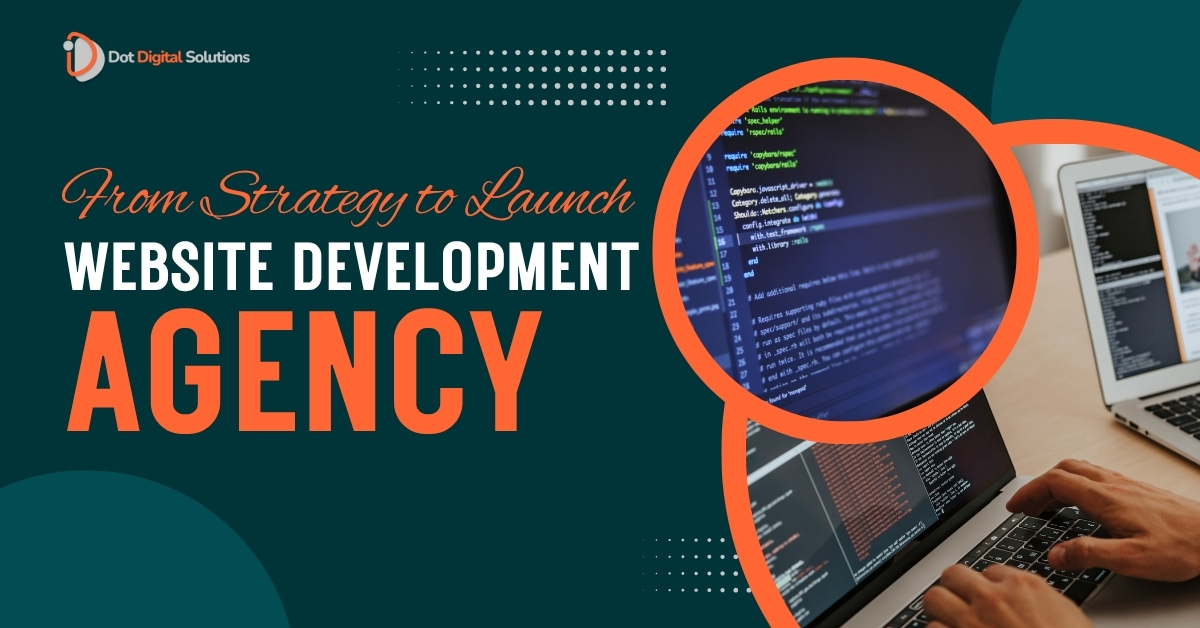A business that wants to do well in the digital age requires a website that looks professional and is easy to use. It is the heart of your brand and helps you develop trust, gain new consumers, and sell your goods or services.
But establishing a website is more than just choosing a great template for the design. To do this, you need a plan, creativity, technical expertise, and aid all the time.
A website development agency can help with that. A committed staff can help you make your vision come to life, whether you’re beginning from scratch or fixing up an old site. This article walks you through the whole process of creating and building a website, from start to finish.
Phase 1: Research and Plans
If you know your business, goals, and audience, you can design a great website. A competent provider will start by asking you what you want your website to do.
This step normally includes:
- Knowing your brand and what it means
- Finding the ideal customer for you
- Finding out what other businesses do and how customers buy items
- If it applies, check out your current online presence.
The purpose of this step is to establish a solid plan. It means figuring out the appropriate platform, making a list of the most important features your site will need, and defining realistic goals and deadlines for the project.
Phase 2: Architecture and Planning
Once you have a plan, the following stage is to figure out how your site will be built. One element of this is making a site map, which shows the important pages that will be on your site. A simple website could comprise a homepage, a about page, a services page, a contact page, and a blog.
The agency will also go after:
- Arranging your materials in a way that makes sense
- Making the first drafts or wireframes for each page
- Deciding how people will go about the place
This planning process makes sure that your website is easy to use and that clients can simply locate ways to buy something or get in touch with your staff.
Phase 3: User Experience and Design
Once the structure is in place, the design process starts. This is where customers can see your brand in action. The business that works on your website will make it look and feel like your brand.
- This step is all about picking the correct colors, fonts, and layout.
- Making sites that function on both computers and phones
- Making sure the design is simple, clean, and up-to-date
Good design is more than simply how things seem. It also entails making sure that people can find what they need and have fun on your website.
Phase 4: Development and Programming
Once the design is accepted, the developers take over. They use HTML, CSS, JavaScript, and other programming languages that only work on certain platforms to turn the design mock-ups into real websites.
- The agency will build the front and back ends of the site during development.
- Use content management systems like Shopify or WordPress.
- Set up the tools you need, including payment gateways, booking systems, or forms for getting in touch.
- Make sure the site looks good on screens of all sizes.
The development team also makes sure to meet the rules for search engines and make sure the site loads quickly.
Phase 5: Assurance of Quality and Testing
A lot of testing is done on the website before it goes online to make sure everything functions as it should. This step is very crucial to keep customers from having troubles when they visit your website.
- Testing usually entails making sure that every button, link, and form works.
- Making sure the site appears good on a wide range of browsers and devices
- Fixing any problems or flaws in the design
- Seeing how quickly and nicely the site functions
- Correct SEO settings
The website is ready to go online after all the tests have been done and passed.
Phase 6: Launching the Website
To make the website live, you need to move it from a development environment to a live server so that other people can see it. Taking care of this step can help you prevent making mistakes or having downtime.
- The Agency will: Make sure that your domain name goes to the new website.
- Set up hosting and backup systems
- Check everything one last time before you go online.
You may also add website analytics and monitoring tools to this platform to find out how people are using your site.
Phase 7: Continual Maintenance and Support
After the launch, the labor doesn’t end. A competent website-building company will always be there to assist your site perform the way it should. This includes regular updates, fixing bugs, and changing the material as your business grows.
The basic services are:
- Changes to the website’s security and backups
- Adding new pages or functions
- Solving problems as they happen
- Keeping an eye on and reporting on performance
Regular maintenance keeps your website useful and up-to-date throughout time.
Final Thought
You need to do more than just develop a few pages to make a great website. It takes a lot of planning, help, and work over a long period of time. When you engage in a professional website development business, you have a team of specialists that can help you with everything from the first plan to the final launch and beyond.
If you want to construct a website that can aid your business, you should go to a well-known company like Dot Digital Solutions. We can help you make your digital ideas come true by focusing on custom solutions, dependable development, and continuous support.
Let’s work together to produce something fantastic.
